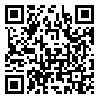Volume 13, Issue 1 (3-2023)
J Health Saf Work 2023, 13(1): 188-201 |
Back to browse issues page
Download citation:
BibTeX | RIS | EndNote | Medlars | ProCite | Reference Manager | RefWorks
Send citation to:



BibTeX | RIS | EndNote | Medlars | ProCite | Reference Manager | RefWorks
Send citation to:
Nourollahi-Darabad M, Afshari D, Dianat M, Mojaddam M. Evaluation of Allowable Weight Limits in Iranian Women Based on Objective and Subjective Criteria: a Laboratory Study. J Health Saf Work 2023; 13 (1) :188-201
URL: http://jhsw.tums.ac.ir/article-1-6810-en.html
URL: http://jhsw.tums.ac.ir/article-1-6810-en.html
1- Department of Occupational Health Engineering, School of health, Ahvaz Jundishapur University of Medical Sciences, Ahvaz, Iran
2- Department of Occupational Health Engineering, School of health, Tabriz University of Medical Sciences, Tabriz, Iran
3- Department of Occupational Health Engineering, School of health, Ahvaz Jundishapur University of Medical Sciences, Ahvaz, Iran ,maryam.mojaddam1370@gmail.com
2- Department of Occupational Health Engineering, School of health, Tabriz University of Medical Sciences, Tabriz, Iran
3- Department of Occupational Health Engineering, School of health, Ahvaz Jundishapur University of Medical Sciences, Ahvaz, Iran ,
Abstract: (812 Views)
Introduction: Occupational back pain is one of the musculoskeletal disorders (MSDs) caused by manual load-lifting among women involved in manual lifting activities. Limits for lifting loads are used to assess the risk and prevention of occupational back pain. The Washington Industrial Safety and Health Act (WISHA) checklist is used as a permissible load assessment limit in Iran. The present study aimed to evaluate the reliability of using the WISHA checklist to determine the allowable limits of manual load-lifting among women based on biomechanical and psychophysical methods.
Material and Methods: In this study, ten women workers aged 20-30 years with a history of manual load-lifting were asked to perform 21 load-lifting tasks designed according to the permitted limits of Iran. A wireless electronic clinometer was used to determine the flexion angles of the trunk while lifting the load. Anthropometric information, load weight, trunk angle, and posture were entered into 3DSSPP software to obtain biomechanical forces for each task and compared them with the recommended National Institute for Occupational Safety and Health (NIOSH) limits. After performing each task, the rate of perceived exertion of each person for each task was collected by using the Borg scale.
Results: The flexion angle for 47.61% of the lifting tasks were more than 20 degrees. The estimated average compressive force for the six tasks exceeded NIOSH’s recommended limits. The average Borg scale was determined hard for 33.33% of lifting tasks and hard to very hard for 9.52% of tasks.
Conclusion: It was found that the manual load-lifting standard for some tasks might not be sufficient to control and prevent low back pain caused by manual lifting in women, and some non-compliance was found with the allowable lifting limits. Manual load-lifting with anthropometric and biomechanical features may increase the biomechanical force on the women’s low back. Therefore, it seems that the allowable lifting limits of Iran for women based on the WISHA checklist should be reviewed and redesigned based on anthropometric and biomechanical characteristics.
Material and Methods: In this study, ten women workers aged 20-30 years with a history of manual load-lifting were asked to perform 21 load-lifting tasks designed according to the permitted limits of Iran. A wireless electronic clinometer was used to determine the flexion angles of the trunk while lifting the load. Anthropometric information, load weight, trunk angle, and posture were entered into 3DSSPP software to obtain biomechanical forces for each task and compared them with the recommended National Institute for Occupational Safety and Health (NIOSH) limits. After performing each task, the rate of perceived exertion of each person for each task was collected by using the Borg scale.
Results: The flexion angle for 47.61% of the lifting tasks were more than 20 degrees. The estimated average compressive force for the six tasks exceeded NIOSH’s recommended limits. The average Borg scale was determined hard for 33.33% of lifting tasks and hard to very hard for 9.52% of tasks.
Conclusion: It was found that the manual load-lifting standard for some tasks might not be sufficient to control and prevent low back pain caused by manual lifting in women, and some non-compliance was found with the allowable lifting limits. Manual load-lifting with anthropometric and biomechanical features may increase the biomechanical force on the women’s low back. Therefore, it seems that the allowable lifting limits of Iran for women based on the WISHA checklist should be reviewed and redesigned based on anthropometric and biomechanical characteristics.
Type of Study: Research |
Received: 2023/03/13 | Accepted: 2023/03/30 | Published: 2023/03/30
Received: 2023/03/13 | Accepted: 2023/03/30 | Published: 2023/03/30
Send email to the article author
| Rights and permissions | |
 |
This work is licensed under a Creative Commons Attribution-NonCommercial 4.0 International License. |






